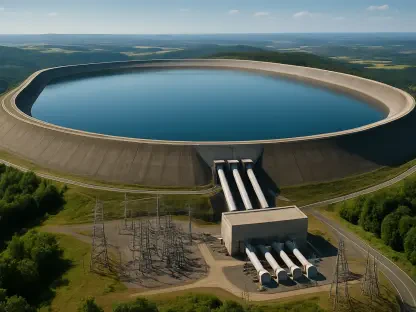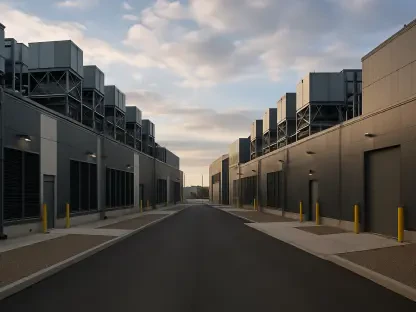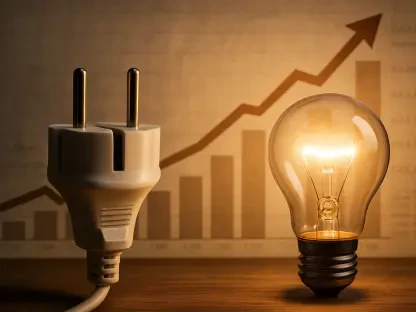In a notable departure from prior U.S. energy strategies, President Donald Trump signed an executive order that significantly reshapes the nation’s energy policy landscape by deprioritizing renewable energy. The executive order, part of the One Big Beautiful Bill Act, reduces support for renewable sources like wind and solar, reorienting focus toward traditional energy, including coal, natural gas, and nuclear power. This policy pivot raises critical questions about the consequences for national security, economic stability, and climate change efforts. The administration claims green energy, while environmentally friendly, poses a risk due to its perceived unreliability and foreign dependency, prompting a reevaluation of energy priorities.
The Policy Shift’s Rationale
Concerns Over Energy Reliability and National Security
Trump’s administration justifies the energy policy shift by criticizing renewable sources for shortcomings in reliability and perceived threats to national security. The emphasis on energy reliability and independence reflects a broader nationalistic sentiment, prioritizing traditional energy industries that have anchored the U.S. energy landscape for decades. The administration argues that reliance on renewables, often backed by foreign supply chains, exposes the U.S. to vulnerabilities that could impact energy sovereignty. Advocates of the new policy assert that fostering coal, natural gas, and nuclear industries aligns with securing a stable domestic energy supply, free from external disruptions.
Further, stringent regulations are imposed on foreign-controlled entities within the renewable energy sector, underscoring the administration’s concern about foreign influence in critical areas of national infrastructure. This stance mirrors growing global anxieties over international dependencies, marking a stark contrast to previous policies that welcomed global green partnerships. While proponents champion the shift as a necessary measure to safeguard national interests, critics warn that sidelining renewables may inadvertently stall technological advancements and economic opportunities in burgeoning green sectors.
Criticism of Renewable Energy’s Economic Impact
The administration’s critique extends to the economic domain, with claims that renewable energy initiatives, despite incentives, have inflicted harm on the electric grid and environment. Critics within the administration argue that subsidies for wind and solar projects disrupt market dynamics, leading to inefficiencies and artificially inflating costs for consumers. The rollback of tax credits for renewable development is one of the executive order’s key provisions, targeting the financial backbone that supported the growth of green energy projects. The move reflects a broader skepticism towards renewable incentives that, according to policy backers, distort energy markets and hinder competitiveness.
Despite these arguments, the economic contribution of the renewable industry is indisputable, with sectors like wind energy employing over 131,000 individuals. Yet the policy shift introduces significant uncertainty, potentially jeopardizing employment and investments in green sectors that have shown promising growth. Proponents of renewables contend that while the sector faces various challenges, its economic potential is integral to future-proofing the U.S. economy against global trends favoring sustainable energy.
Impact on Existing and Future Projects
Immediate Effects on Wind and Solar Developments
The federal pullback from renewable energy affects numerous existing and future projects, particularly in wind and solar sectors. By halting subsidies and enforcing stricter regulations, the executive order increases operational and financial risks for developers. Challenges also arise from mandated Treasury Department eliminations of essential tax credits, impacting sectors that previously depended on these incentives to attract investments and maintain cost competitiveness. Many developers that have already committed significant resources may face accelerated timelines to qualify for remaining benefits, intensifying project pressures.
The directive’s impact extends beyond financial aspects, with broader procedural changes freezing new permits and approvals for projects, amplifying industry uncertainties. Offshore wind developments are notably affected, with policy shifts potentially derailing state-level initiatives that had aligned with federal incentives. This reorientation introduces hurdles that could stall progressive clean energy strategies, with developers reevaluating project viability in light of these changed circumstances. The cumulative effect of these policy adjustments casts a shadow over the industry’s momentum and growth aspirations.
Effects on State Climate Policies
States with ambitious climate goals, such as New York and New Jersey, face significant challenges due to the policy shift, which threatens to derail established green energy trajectories. Both states, having heavily invested in offshore wind projects, now confront a potential realignment of their energy strategies amid reduced federal support. Policymakers must navigate this complex landscape, balancing state objectives with the reality of tightened regulations and financial constraints imposed by the federal level. The potential need to recalibrate approaches may lead to delayed progress toward achieving key emissions targets.
Adjusting state policies to counter federal retrenchment presents a multidimensional challenge, as states attempt to preserve their clean energy ambitions within a constrained financial and regulatory framework. The withdrawal of federal backing complicates efforts to attract private investment, diminishing incentives for projects that once thrived under supporting legislation. This dynamic underscores the critical role government policies play in shaping energy landscapes, highlighting the shifting balance of power between federal directives and state intentions in the evolving energy narrative.
International and Domestic Critiques
International Perspective on Renewable Investment
The global context surrounding renewable investment provides a contrasting backdrop to the U.S.’s current trajectory. At a time when European and Asian nations are aggressively investing in clean energy, the U.S. policy shift prompts concerns about losing technological leadership and market opportunities in burgeoning sectors. According to the International Energy Agency’s World Energy Investment report, projected global investments in clean energy reach substantial levels, fueled by broad international commitment to addressing climate change. These dynamics reveal potential competitive disadvantages for the U.S., which, by retrenching from established renewable frameworks, risks ceding influence and innovation leadership in crucial areas.
Critics argue that the American retreat from renewable investments may undermine collective global efforts to pivot toward sustainable energy futures. By reducing proactive involvement in clean energy, the U.S. could miss out on opportunities for meaningful participation in the global transition, aligning more closely with unilateral energy agendas. This perspective emphasizes the broader narrative shift towards sustainable strategies evident in international scenarios, where nations are increasingly prioritizing transitional leadership for long-term planetary well-being.
Domestic Reactions and Policy Implications
Domestically, the policy shift stirred varied reactions across political and social spectrums, with opposition spanning parties due to the implications for national progress in clean energy. Many local governments and companies, irrespective of political affiliations, have embraced renewable energy as a cornerstone for environmental sustainability and economic growth. These sectors now grapple with reconciling local ambitions against an altered federal landscape marked by diminishing incentives and policy ambiguities. Critics fear that the new administration’s direction could stall progress made by communities that mobilized resources and innovation in pursuit of clean energy goals.
The emerging tension between federal and state policies highlights the ongoing balancing act needed to address environmental and economic priorities. While Trump’s supporters emphasize bolstering energy independence and traditional industries, skeptics warn that persistent reliance on fossil fuels amidst climate change discussions underscores disconnects with evolving public expectations and scientific advisories. This dynamic environment presents significant implications for the future of U.S. energy strategies, urging continued examination of policy decisions and their wider impact on both domestic objectives and global commitments.
Future Considerations and Actions
In an unprecedented shift from previous U.S. energy policies, President Donald Trump enacted an executive order that redefines the nation’s energy landscape by deprioritizing renewable energy. As part of the One Big Beautiful Bill Act, this order minimizes support for renewable energy sources such as wind and solar and redirects focus toward more traditional energy forms, including coal, natural gas, and nuclear power. Such a significant change evokes important discussions about the potential impacts on national security, economic stability, and ongoing climate change mitigation efforts. The administration argues that, despite their environmental benefits, green energy sources could be unreliable and increase foreign dependency, leading to a reassessment of priorities in the energy sector. This policy pivot reflects a broader intention to secure a more stable and self-reliant energy industry, emphasizing domestic energy production to bolster the economy while ensuring consistent energy supply and enhancing U.S. energy independence.









